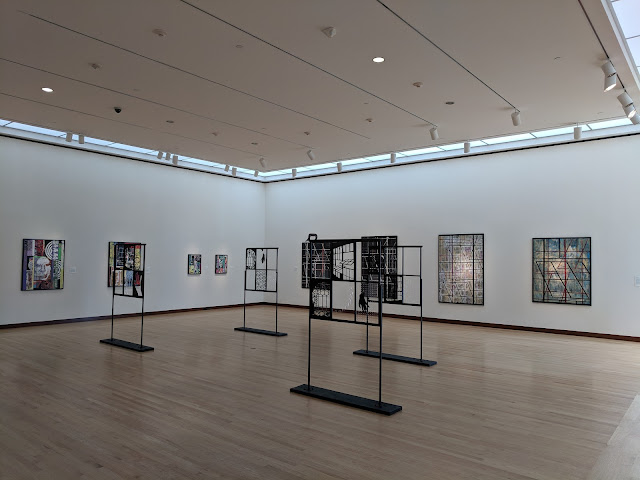Americans are well-aware of a concept developed by our rival global antagonists of using American freedoms, social norms and expectations against us. For example, extremism can effectively hide behind religious freedom of expression against criticism or legal remedy.
The curation of Art has been under political attack for decades usually by politicians who extort concessions by withholding funding and claiming to be guardians of a public constituency needing protection from the indecency of the latest art sensation. The soft fascism of threatening public funding of the offending institution was often enough to discourage another such sensation getting exposed *there*.
And though the Art World would be loathe to admit it, art in America has been self-constrained for decades. Art curators, like dogs trained not to break their way across and electronic fence, are rarely suicidal enough to promote anything too risque for fear of their jobs and a tarnished CV.
However, the object of the contention was always the quality of art and not something else.
Today, we see disruptive mutations of this idea being played out nationally, and to some degree internationally. The variation is a logical one.
First, the exposure of certain kinds of art can be constrained is well-established. One way [using copiously by government] is to threaten or deny funding. Soooo... one way to exercise control over what gets shown is to seize control of the agency of what gets funded. And so, under the special interest banner of "diversity" - [as defined by minority status, geographic origin, and cultural [no matter how dubious] background] - the micromanagement of art funding is being controlled. This is the first form of the Identity Politics effect that eliminates the quality of art as a metric of artistic merit and elevates the individual nuances [no matter how contrived] of the artist and their constituency.
The second mutation is cultural vigilantism. To understand the ease in which juried art shows can be fixed I need to briefly explain the game pieces.
Art has no formal definition. It has a number of categories, all of them fair but soft. In other words, no one can authoritatively claim something isn't art. Within the working artist community, there's a trust relationship that what is submitted as art is intended to be worthy of consideration.
The second gaming piece is that jurors of art shows are also trusted to use their best judgment in evaluating the body of submissions and to honor the subject to which the work was addressed. The juror is rarely held accountable for the selections they make. As an artist, you take your chances and it always costs money - you are subsidizing the show this juror selects as a matter of trust that its curation is trustworthy.
So these two gaming pieces offer plausible deniability for the eventual selection of art for juried shows. Artists trust each other to submit authentic art and they trust [implicitly biased] jurors to put their biases to one side and objectively curate *the art*. And everyone in the art community is aware that the final selection
is used to always be an aesthetic sausage for better or worse.
But all of these trust presumptions cannot be taken for granted any longer. Any simple arithmetic applied to juried art shows in the United States going back years exposes an alarming fact. Juried art shows are more often than not juried by women who ore often than not favor female artists with statistically improbable regularity.
It is empirically obvious that the quality of art, the metrics by which art is judged, and the veracity of prestige associated with curators and their politically endorsed art beneficiaries is the equivalent of artistic malware - a denial of service attack on gallery institutions. And its being performed by presumably well educated, credentialed individuals who seem to believe they are being asked to punish contemporary innocents for the crimes of historical ancestors.
By being disingenuous as to their intent and by taking money from individuals they have no intention of judging objectively, they are committing fraud on a class action scale. They and their educational mentors need an intervention.
In the meantime, choose your juried shows carefully AND publish the scorecards of local jurors so we can all triangulate this kind of information.
Key pieces of information;
How many entries to a show, then by gender.
How many accepted pieces, then by gender of artist.
Note that the names of male sounding names are often deceptions.









